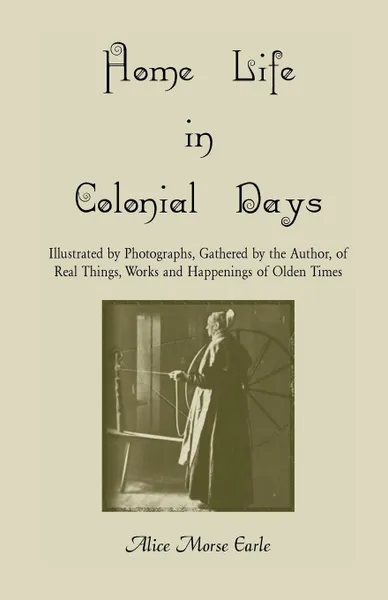Home Life in Colonial Days 14+
Автор: Alice Morse Earle
2013
540 страниц
Категория: Литература на иностранных языках
ISBN: 9780788415128
Язык: Английский
📗 Occupations, such as weaving and spinning had their own implements and vocabulary, along with a variety of terms, phrases and names, which have become almost obsolete. Explanation of these old words and phrases rescues them from disuse, and preserves them for future reference. Photographs and illustrations of these rare relics and past days adorn the majority of these pages, bringing to life many items from everyday colonial life.
"Many a curious article as nameless and incomprehensible as the totem of an extinct Indian tribe has been studied, compared, inquired and written about, and finally triumphantly named and placed in the list of obsolete domestic appurtenances. From the lofts of woodsheds, under attic eaves, in dairy cellars, out of old trunks and sea-chests from mouldering warehouses, have strangely shaped bits and combinations of wood, stuff, and metal been rescued and recognized."
A detailed account of Colonial dwellings as they evolved from earthen caves to log cabins, then wooden and brick houses includes references to specific houses. The diverse assortment of topics examined includes: candles and lamps, the kitchen fireside and furnishings, the serving of meals, the importance of Indian corn, food and drink preparation, flax culture, wool culture, spinning, cotton, hand-weaving, girl's occupations, typical dress and accessories of Colonials, the Jack knife, transportation and taverns, churches and Sunday services, the strength and growth of New England built upon neighborliness, Southern hospitality, mutual welfare, the old-time flower garden and more. The text is indexed according to subject.
"Many a curious article as nameless and incomprehensible as the totem of an extinct Indian tribe has been studied, compared, inquired and written about, and finally triumphantly named and placed in the list of obsolete domestic appurtenances. From the lofts of woodsheds, under attic eaves, in dairy cellars, out of old trunks and sea-chests from mouldering warehouses, have strangely shaped bits and combinations of wood, stuff, and metal been rescued and recognized."
A detailed account of Colonial dwellings as they evolved from earthen caves to log cabins, then wooden and brick houses includes references to specific houses. The diverse assortment of topics examined includes: candles and lamps, the kitchen fireside and furnishings, the serving of meals, the importance of Indian corn, food and drink preparation, flax culture, wool culture, spinning, cotton, hand-weaving, girl's occupations, typical dress and accessories of Colonials, the Jack knife, transportation and taverns, churches and Sunday services, the strength and growth of New England built upon neighborliness, Southern hospitality, mutual welfare, the old-time flower garden and more. The text is indexed according to subject.
Мнения
